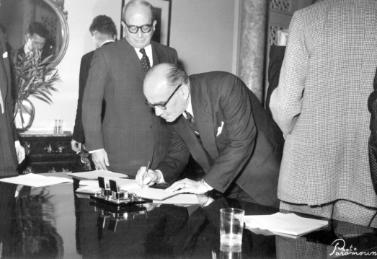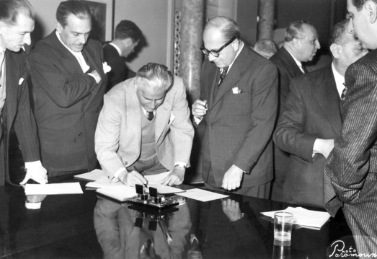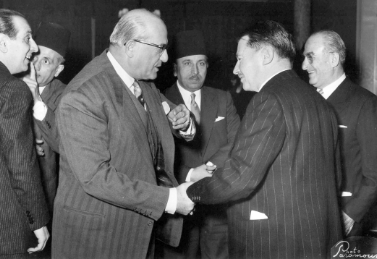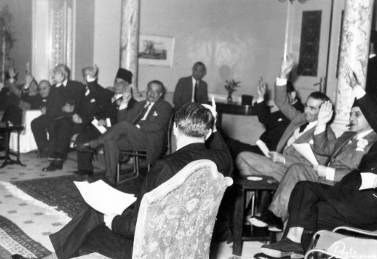Historical Overview of the British Boys’ School in Lebanon and Serjbal Property
We would like to thank Amine Daouk, former Chairman of the BHSCS, for preserving the original documents relating to the Serjbal property and entrusting us with them. We have made copies and one copy is deposited at Friends’ House. They are also scanned and published below.
Following the dissolution of Victoria College (which provided British public school education) in Alexandria and Cairo in 1956, there was a demand for a school in the Middle East to be run on British public school lines, bearing in mind that the Gulf area was under British influence during that period. The proposal was warmly welcomed by most influential people in Lebanon, who supported this idea in unprecedented unity.
The British School in Lebanon (BSL) project was initiated in 1956 in order to establish a school for boys in Lebanon. The first meeting was at the Presidential Palace on 5 September 1956 under the auspices of the President of the Lebanese Republic, H.E. President Camille Chamoun, and the British Ambassador, H.E. Sir George Humphrey Middleton, who were the trustees. The trustees in turn appointed a board of governors of 3-11 persons, half appointed by the President and half by the British Ambassador.
The licence to open the school was given in Presidential Decree no. 1468, dated 10 June 1959, and signed by the Prime Minister of the Lebanese Republic, H.E. Rashid Karami, and the Minister of Education, H.E. Pierre Gemayel.











